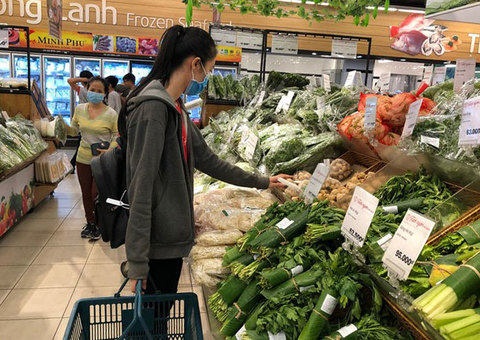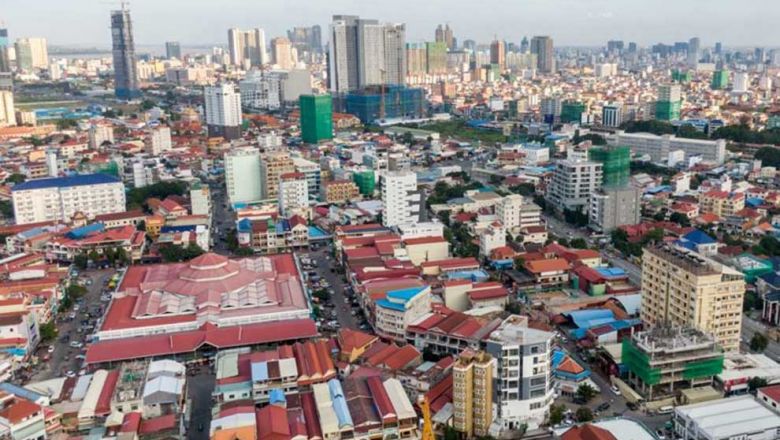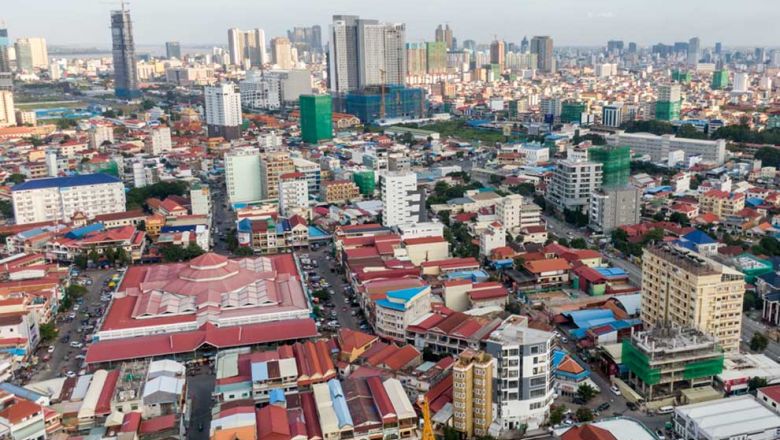An outlook into 2021 economy
An outlook into 2021 economy
The year 2020 was an economically tense year with every country in the region and around the world – including Cambodia – striving to combat the spread of Covid-19, which not only poses a global health risk, but also threatens a serious impact on global economic growth.Cambodia’s economy will contract two per cent in 2020 before swiftly recovering to four per cent growth this year, the World Bank projects, citing effective government measures that respond to the specific needs of the most affected sectors – including tourism, garments and textiles, and construction.These figures are similar to the government’s projections of a 1.9 per cent contraction for 2020 before a return to 3.5 per cent growth this year.The government has been pulling out all the stops to boost local production capacity for export and sign free trade agreements (FTA) in hopes of reinforcing trade and investment relations with countries in the region and around the globe.The Post’s May Kunmakara, sat down with World Bank senior economist for Cambodia Ly Sodeth to discuss the Kingdom’s 2020 economic performance and what we can expect this year.
What were the key considerations in the World Bank’s projection?
With the easing of social distancing measures, Cambodia’s domestic economic activity has been gradually returning to normalcy. Domestic demand, including domestic travel and tourism, is picking up.
We haven’t seen significant adverse impacts so far of the pandemic on the banking sector or on the balance of payments, while market confidence has been gradually restored as the outbreak is largely under control.
Private consumption is partly underpinned by government fiscal direct support, amounting to 2.8 per cent of gross domestic product (GDP). While the contraction in goods and services exports is relatively large, due mainly to the sharp decline in the tourism sector, it is expected to recover this year.
Import contraction has been moderate as consumption has held up, thanks largely to the relatively large government intervention. The recent signing of the Cambodia-China Free Trade Agreement (CCFTA) and Regional Comprehensive Economic Partnership (RCEP) will help further promote domestic investment and regional trade.
What’s the current outlook for the Kingdom’s garment and tourism sectors after nearly a year of the Covid-19 pandemic upending life as we know it?
The immediate future of garment exports, which account for two-thirds of manufacturing exports, remains uncertain. Cambodia’s exports of manufactured products which include garments, travel goods, footwear, bicycles, electrical parts, and vehicle parts and accessories fell by 2.5 per cent during the first nine months of 2020.
Due to travel restrictions and lockdowns, Cambodia’s tourism and hospitality sector has experienced a severe downturn, with international arrivals falling by 74.1 per cent year-on-year during the first nine months of 2020.
This has only been partly offset by a return of domestic tourism. Public investment programme initiatives introduced by the Cambodian authorities to build physical infrastructure in the provincial towns of Sihanoukville and Siem Reap will improve the connectivity and underpin tourism sector development.
With Covid-19 catalysing a rise in e-businesses and a government-backed transformation in today’s growing digital economy, does the World Bank see itself getting involved?
How well firms cope with the adverse shocks of the global Covid-19 pandemic will, among other factors, depend on their ability to make other types of adjustments to their business model, including adoption of digital technologies to facilitate a less contact-intense environment for employees and customers.
As is highlighted in the Country Economic Update’s Special Focus, firms’ use of digital platforms to conduct business practices increased in response to Covid-19 in Cambodia.
The World Bank remains committed to supporting the Royal Government of Cambodia in its transformation to a digital economy – a policy agenda that is more important now than ever.
You briefly touched on the RCEP and CCFTA. How will these and the nine other FTAs in the pipeline offset the impact of the EU’s recent withdrawal of Cambodia from its ‘Everything But Arms’ arrangement and better equip the Kingdom to achieve medium- and long-term economic stability?
The partial withdrawal of the EU’s “Everything But Arms” trade preferential treatment became effective on August 12, 2020, affecting approximately 20 per cent of Cambodia’s exports to the EU.
Cambodia manufacturing exports are adjusting. Exports of garments, travel goods, footwear and bicycle products to the US market rose to $2.7 billion, expanding at 7.6 per cent year-on-year in the first nine months of 2020.
The US market is the largest, accounting for 36 per cent of Cambodia’s total exports of garment, travel goods, footwear, and bicycle products.
Trade agreements between countries that lower trade barriers on imported goods provide welfare gains to consumers from increases in variety, access to better-quality products, and lower prices, thus creating trade.
The CCFTA is expected to attract foreign direct investment (FDI) inflows to Cambodia. Sectors such as agriculture, agro-processing, and manufacturing are well positioned to export to the Chinese market and beyond. However, the CCFTA alone may be insufficient to boost Cambodia’s trade and economic performance.
What steps does the World Bank recommend the government to take to reap in the fruit from regional and FTA deals?
It is essential to facilitate an expansion of domestic and foreign investment arising largely from recent bilateral and regional FTAs.
In this regard, introducing competitive investment laws and incentive schemes is particularly important. In the medium term, nurturing integration of Cambodia’s agro-processing and manufacturing value chains into regional value chains will also be needed.Improving connectivity, upgrading skilled labour and reducing energy costs will are among other key steps.
How else does the Kingdom and Cambodians stand to benefit from similar FTA deals down the line?
Trade agreements between countries that lower trade barriers on imported goods provide welfare gains to consumers – from increases in variety, access to better-quality products, and lower prices.
The CCFTA is expected to attract FDI inflows to Cambodia. Sectors such as agriculture, agroprocessing and manufacturing are well positioned to export to the Chinese market and beyond.
Cambodia’s comparative advantages may include its underutilised labour force and relatively low labour costs, generating gains through specialisation and economies of scale.
This will potentially help Cambodia expand beyond the established pattern of production heavily dependent on garment and footwear, while promoting a more diversified economic structure.
















